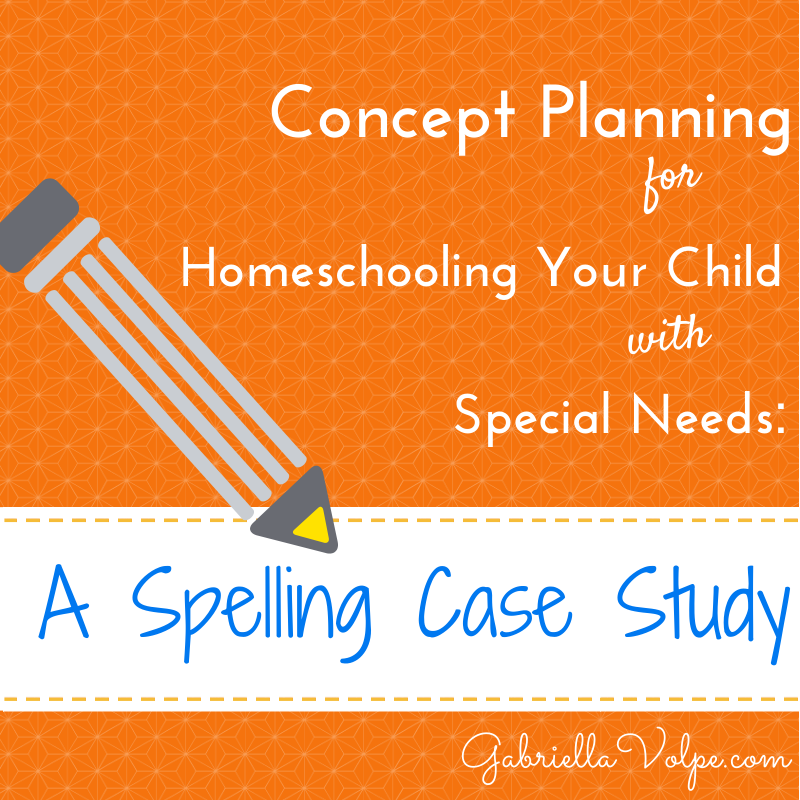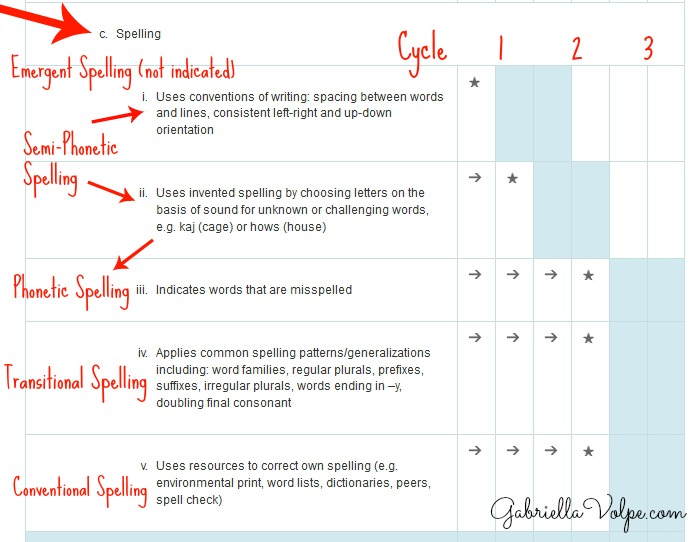
Does this sound like you: You’ve chosen to homeschool, you have all the curriculum/ program/ resource materials you need, but you’re at loss with guiding your child with one of his biggest issues: spelling.
This article is a sample case study. It takes you through the steps I follow in preparing a client report — in this case, for spelling. I am purposely leaving out diagnoses or identifiers that point to a specific disorder because it doesn’t matter. When teaching our children, we don’t teach to the diagnosis, but to the symptoms. This child in the case study could have a diagnosis different from your child, but could still be experiencing many of the same difficulties.
For the purposes of this article, know that I completely made up this child.
Concept Planning
Concept: Spelling
Problem
Taylor is a nine year old girl struggling with spelling. She is given words to study weekly and has a difficult time retaining them. She often gets them wrong when asked to spell them. Because of this, she also needs to be coaxed to write. She is afraid of making mistakes, calls herself hurtful names, and shuts-down completely when mom pulls out her notebooks. Her parents are at a loss with how to help her.
Strengths with this concept
After some discussion with her parents, I learn that Taylor:
- understands the conventions of print (left to right, top to bottom of page)
- mostly depends on sounds that are audible to her like “spidr” (which indicates she can hear spoken words as individual sounds)
Understanding the issue
Based on the data given to me by her parents both in a questionnaire and online consultation, I have determined that very likely, Taylor falls somewhere between the semi-phonetic and phonetic phases of spelling.
In the last post, I shared the importance of referring to educational developmental continua to guide your teaching. The concept of spelling is no different.
Most spelling continua include five stages:
[ordered_list style=”decimal”]
- emergent (or pre-spelling)
- semi-phonetic (or pre-phonetic)
- phonetic
- transitional
- conventional (or independent)
[/ordered_list]
Below is a short-form version of such a continuum taken from the Quebec Progression of Learning document.

The red markings on this Quebec Progression of Learning for spelling are mine. I have indicated the cycle levels as well as the spelling phases according to the descriptors in the spelling progression. The emergent stage isn’t included since it’s often at the preschool/ kindergarten level. The arrows show that the semi-phonetic stage can span over two cycles, as can the phonetic stage.
Goals
Taylor will:
- begin to take risks with spelling in one month’s time
- gain confidence with writing in one month’s time
Recommendations:
1- Model. Taylor needs to see adults using writing in meaningful ways. Each time a parent makes a shopping list, he needs to talk aloud – modeling spelling strategies.
Example:
- Say: “Let’s see… we need more bananas for the muffins we’ll make tomorrow. We need sugar, vanilla, baking soda and we’re also missing flour. Hmmm… how do I spell flour? Let me try it and see. F-l-a-w-r? No, that doesn’t look right. Let me try that again. F-l-o-w-r. No, that doesn’t look like it is right either. Hmm… I know! I’ll go check on the flour packaging. Ah! That’s how it’s spelled: F-l-o-u-r. Flour.”
Be sure to model the spelling errors writers make, the strategies used to figure it out, and also the trick when absolutely stuck (using a reference).
Other times to model writing in meaningful contexts: when writing a thank you card to a friend, taking down a message, filling out forms for a therapist, etc.
2- Engage with print in meaningful contexts. Because she is reluctant to attempt writing, Taylor needs to begin with books/ texts as a means to highlight significant sounds and blends.
Example:
- When flipping together through Taylor’s favorite books (and only after several days of reading for pleasure) begin to circle words with (your finger) that contain special features such as “oo” or “ea” or “gn”. Say, “Oh, that’s interesting. There are two o’s together. What sound does that make? What is that word? What other letters make that sound?” (“ou” as in “you”, or “u_e” as in “blue”)
3- Encourage risk-taking. For the next few weeks, Taylor’s spelling should not be corrected unless she requests the spelling of the words on her own. Encourage her to write (with pen or on the computer, whatever her preference is) and allow her to make errors as she goes along. Remember that the goals are to help her take risks with spelling so as to help her regain her confidence as a writer.
Meaningful writing opportunities include writing a thank you card to her grandparents, helping parents write the grocery list (parent lists the items, Taylor writes them), writing a personal narrative (even if only a few words) in her journal, writing a letter or an email to a penpal, creating labels for the shelving units or file folders, etc.
4- Avoid spelling lists. For the time being, Taylor should not be given random spelling lists to memorize.
The parent needs to keep track of the words Taylor is having difficulty spelling. Record the words in a notebook to be referenced at a later date (when Taylor is ready to tackle meaningful spelling lists). At that point in time, the parent can say, “You seem to have trouble spelling the word ‘understand’. What tricks can we use to help you remember the spelling next time?”
5- Encourage, encourage, encourage. Parents need to dance a fine line between pushing the child to try and also backing away enough so as not to have him shutdown completely. Encouragement should sound like this: “Wow! You’re loving writing lists these days, aren’t you?” or “I liked how you created those labels for dad’s files last week. Can you help me with mine tomorrow?”
Once parents see progress with the two goals, Taylor can be challenged with additional spelling-specific goals in the next plan.
Resources
Quebec Progression of Learning – Conventions of written and media language page
5 Stages of Spelling Development – a sample continuum (PDF)
Related article on this blog
Tools for Meeting Your Child Where He’s At: Using Educational Continua in Homeschooling
If you would like to get more in-depth with teaching a concept your child may be struggling with, schedule a consultation.



0 Comments